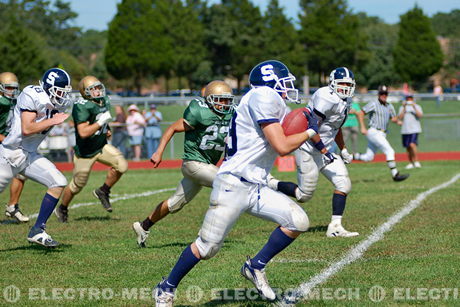
If you have ever been to “The Big Easy” – there is no doubt in your mind that the people of New Orleans love their sports teams. Some of the most passionate sports enthusiasts in Louisiana, as well as the world, live and breathe for their teams. This includes the New Orleans Saints, the cherished football team.
In 1926, a portion of Tulane University was segmented off to build Tulane Stadium. Since the University was considered the home of the Sugar Bowl, the stadium itself was also coined as The Sugar Bowl. The building was made of concrete and brick and with seating for around 35,000, it was thought to be a large enough arena for their games. The pride of New Orleans, the stadium was also called “The Queen of the Southern Stadiums”. Tulane Stadium was built to the delight of the sports editor of The New Orleans Item, who had dreams of a yearly football game on New Year’s Day.
It didn’t take long for the fans and the sports teams to outgrow the initial size. Expansion plans were configured to create a larger stadium, to hosting almost 81,000 fans. Steel upper decks and a press box were added and in 1957 they added the lights. Expansion slowly covered the original brick so that only a few would even recognize the structure. Over the years, the stadium hosted the local football games of Tulane University, but also the famed “Sugar Bowl” and, from 1967 to 1974, the NFL’s New Orleans Saints. Three “Super Bowls” were held at Tulane Stadium with the last of Super Bowl IX to the screams (and tears) of the local residents. The last game won by The Saints was in 1974 when they beat The Saint Louis Cardinals.
In 1979, the Tulane President made the sad announcement of the stadium’s intended demolishment, with plans for the new Louisiana Superdome as a replacement. The final game at Tulane Stadium was between two local rival teams in the New Orleans Catholic League: De La Salle High School and Archbishop Rummel High School. Rummel scored the winning point. There was a little known fact that some of the stadium storage area was actually used by the University. During the tear down process, previously lost or forgotten University possessions were rediscovered, including an Egyptian mummy couple set.
The University proved that the older brick area of the stadium was still good and was used for smaller practice venues over a period of five years. Finally, it was converted to student housing, a parking area, a center for fitness and a student quad. Tulane Stadium remains as one of the three major stadiums in the country that hosted the Super Bowl and was later demolished. The other two stadiums include Tampa Stadium and The Orange Bowl.
The people of New Orleans welcomed the Louisiana Superdome. Larger, modern and, at the time, the largest fixed or secured dome structure in the world; this venue can handle all variations of sports, entertainment and concerts and has been selected to host the 2013 Super Bowl XL VII.
